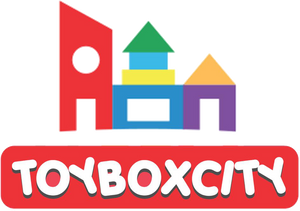Dance Workouts Kids Can Do at Home
Dance workouts are one of the most enjoyable and effective ways for children to stay active, healthy, and happy. Unlike traditional exercise routines, dance combines physical movement with rhythm, creativity, and fun.
The Benefits of Dance Workouts for Children
Dance workouts provide a wide range of benefits that go beyond physical fitness. They support children’s overall development and well‑being.
Key benefits include:
-
Physical Health – Improves cardiovascular endurance, flexibility, and muscle strength.
-
Motor Skills – Enhances balance, coordination, and spatial awareness.
-
Mental Health – Reduces stress, boosts mood, and encourages self‑expression.
-
Social Skills – Builds confidence and teamwork when done with siblings or friends.
-
Academic Support – Movement and rhythm can improve focus and memory.
Dance is unique because it combines exercise with creativity. Children don’t just move—they learn to express themselves, which supports emotional growth.
By making fitness fun, dance workouts encourage lifelong healthy habits.
Types of Dance Workouts Kids Can Try at Home
There are many styles of dance workouts suitable for children, each offering different benefits.
Popular options include:
-
Hip‑Hop Dance – Energetic moves that build stamina and coordination.
-
Zumba Kids – Latin‑inspired routines designed specifically for children.
-
Ballet Basics – Teaches posture, flexibility, and discipline.
-
Jazz Dance – Focuses on rhythm, sharp movements, and creativity.
-
Freestyle Dance – Encourages kids to invent their own moves.
-
Cultural Dances – Introduces children to global traditions and rhythms.
Each style can be adapted to home settings, requiring only music and space. Parents can choose routines based on their child’s interests and energy levels.
How to Set Up a Safe Dance Space at Home
Safety is essential when children exercise at home. A well‑prepared space prevents injuries and makes dance more enjoyable.
Tips for creating a safe environment:
-
Clear the Area – Remove furniture, toys, or obstacles.
-
Use Non‑Slip Flooring – Hardwood, carpet, or mats reduce risk of falls.
-
Wear Comfortable Clothing – Loose, breathable clothes allow free movement.
-
Hydration – Keep water nearby to prevent dehydration.
-
Supervision – Parents should monitor younger children during workouts.
A safe space ensures that kids can dance freely without fear of accidents. It also helps parents feel confident about encouraging regular activity.
Fun Dance Workout Ideas for Kids
Dance workouts don’t have to be complicated. Simple, creative routines keep children engaged.
Ideas include:
-
Dance Freeze Game – Kids dance until the music stops, then freeze in place.
-
Follow the Leader – One child invents moves, others copy.
-
Storytelling Dance – Movements act out a story or adventure.
-
Dance Relay – Kids take turns adding new moves to a routine.
-
Family Dance Party – Parents join in for bonding and fun.
These activities combine exercise with play, making them ideal for younger children. They also encourage imagination and teamwork.
Online Resources and Apps for Dance Workouts
Technology provides easy access to guided dance workouts for kids.
Useful resources include:
-
YouTube Channels – Many offer free dance tutorials for children.
-
Fitness Apps – Apps like Just Dance or GoNoodle provide interactive routines.
-
Virtual Classes – Online studios offer live sessions with instructors.
-
Music Playlists – Parents can create custom playlists for freestyle dancing.
-
Educational Platforms – Some schools integrate dance into online learning.
These resources make it simple for families to incorporate dance into daily routines. They also provide variety, preventing boredom.
Health and Developmental Benefits of Dance
Dance workouts support children’s growth in multiple ways.
Health benefits include:
-
Cardiovascular Fitness – Improves heart and lung function.
-
Strength and Flexibility – Builds muscles and enhances range of motion.
-
Weight Management – Helps maintain healthy body weight.
-
Bone Health – Supports bone density through weight‑bearing activity.
-
Cognitive Development – Movement stimulates brain function and learning.
Dance is particularly effective for children because it integrates physical activity with rhythm and memory. This combination strengthens both body and mind.
Tips for Parents to Encourage Dance Workouts
Parents play a crucial role in motivating children to stay active.
Helpful strategies include:
-
Join In – Dancing together makes workouts fun and builds family bonds.
-
Set Routines – Schedule regular dance sessions to build consistency.
-
Celebrate Progress – Praise effort and creativity, not just skill.
-
Mix It Up – Rotate styles and songs to keep things fresh.
-
Balance Screen Time – Use apps wisely while encouraging offline play.
When parents actively participate, children are more likely to enjoy and stick with dance workouts.
The Future of At‑Home Dance Workouts for Kids
As technology and fitness trends evolve, dance workouts for children will continue to grow in popularity.
Future developments may include:
-
Virtual Reality Dance – Immersive environments for interactive routines.
-
AI‑Powered Apps – Personalized feedback and adaptive lessons.
-
Global Dance Communities – Online platforms connecting kids worldwide.
-
Integration with Schools – Blended learning combining dance and academics.
-
Health Tracking – Wearables monitoring activity and progress.
The future promises more engaging, accessible, and effective dance workouts, making them a lasting part of children’s fitness culture.


